Recent research has shown, without a doubt, that the calcium from dairy products is beneficial for fat loss in obese folks. Unless you are allergic to dairy then there is no reason to avoid it as long as the calories fit into your overall diet plan. If you are lactose intolerant then foods such as yogurt, cottage cheese and whey protein can usually still be eaten without trouble. If you have an allergy to dairy proteins (which is quite rare) then you might want to avoid them completely.
I think the old myth that you can't "cut" on dairy harks back to the days when there were no lowfat dairy products (not even milk) and whey isolate didn't exist. Most dairy foods are also pretty high in sodium which may cause fluid weight in sensitive folks.
Am J Clin Nutr. 2004 May;79(5):907S-912S.
Role of calcium and dairy products in energy partitioning and weight management.
Zemel MB.
University of Tennessee Nutrition Institute, 1215 West Cumberland Avenue, Room 229, Knoxville, TN 37996-1920, USA.
[email protected]
Dietary calcium plays a pivotal role in the regulation of energy metabolism because high-calcium diets attenuate adipocyte lipid accretion and weight gain during the overconsumption of an energy-dense diet and increase lipolysis and preserve thermogenesis during caloric restriction, which thereby markedly accelerates weight loss. Intracellular Calcium plays a key regulatory role in adipocyte lipid metabolism and triacylglycerol storage; increased intracellular Calcium results in the stimulation of lipogenic gene expression and lipogenesis and the suppression of lipolysis, which results in increased lipid filling and increased adiposity. Moreover, the increased calcitriol produced in response to low-calcium diets stimulates adipocyte Calcium influx and, consequently, promotes adiposity, whereas higher-calcium diets inhibit lipogenesis, inhibit diet-induced obesity, and promote lipolysis, lipid oxidation, and thermogenesis. NOTABLY, DAIRY SOURCES OF CALCIUM MARKEDLY ATTENUATE WEIGHT AND FAT GAIN AND ACCELERATE FAT LOSS TO A GREATER DEGREE THAN DO SUPPLEMENTAL SOURCES OF CALCIUM. This augmented effect of dairy products relative to supplemental calcium is likely due to additional bioactive compounds, including the angiotensin-converting enzyme inhibitors and the rich concentration of branched-chain amino acids in whey, which act synergistically with calcium to attenuate adiposity. These concepts are confirmed by epidemiologic data and recent clinical trials, which indicate that diets that include > or =3 daily servings of dairy products result in significant reductions in adipose tissue mass in obese humans in the absence of caloric restriction and markedly accelerate weight and body fat loss secondary to caloric restriction compared with diets low in dairy products. These data indicate an important role for dairy products in both the prevention and treatment of obesity.
Int J Obes Relat Metab Disord. 2005 Apr;29(4):391-7.
Dairy augmentation of total and central fat loss in obese subjects.
Zemel MB, Richards J, Mathis S, Milstead A, Gebhardt L, Silva E.
Department of Nutrition, The University of Tennessee, Knoxville, TN 37996-1920, USA.
[email protected]
BACKGROUND AND OBJECTIVE: We have previously demonstrated an antiobesity effect of dietary Ca; this is largely mediated by Ca suppression of calcitriol levels, resulting in reduced adipocyte intracellular Ca2+ and, consequently, a coordinated increase in lipid utilization and decrease in lipogenesis. Notably, dairy Ca is markedly more effective than other Ca sources. DESIGN: Obese subjects were placed on balanced deficit (-500 kcal/day) diets and randomized to control (400-500 mg Ca/day; n = 16) or yogurt (1100 mg Ca/day; n = 18) treatments for 12 weeks. Dietary macronutrients and fiber were held constant at the US average. MEASUREMENTS: Body weight, body fat and fat distribution (by dual-energy X-ray absorptiometry), blood pressure and circulating lipids were measured at baseline and after 12 weeks of intervention. RESULTS: Fat loss was markedly increased on the yogurt diet (-4.43+/-0.47 vs -2.75+/-0.73 kg in yogurt and control groups; P<0.005) while lean tissue loss was reduced by 31% on the yogurt diet. Trunk fat loss was augmented by 81% on the yogurt vs control diet (P<0.001), and this was reflected in a markedly greater reduction in waist circumference (-3.99+/-0.48 vs -0.58+/-1.04 cm, P<0.001). Further, the fraction of fat lost from the trunk was higher on the yogurt diet vs control (P<0.005). CONCLUSION: Isocaloric substitution of yogurt for other foods significantly augments fat loss and reduces central adiposity during energy restriction..


 Please Scroll Down to See Forums Below
Please Scroll Down to See Forums Below 










 ) I've done pretty good limiting myself this week, though!
) I've done pretty good limiting myself this week, though!